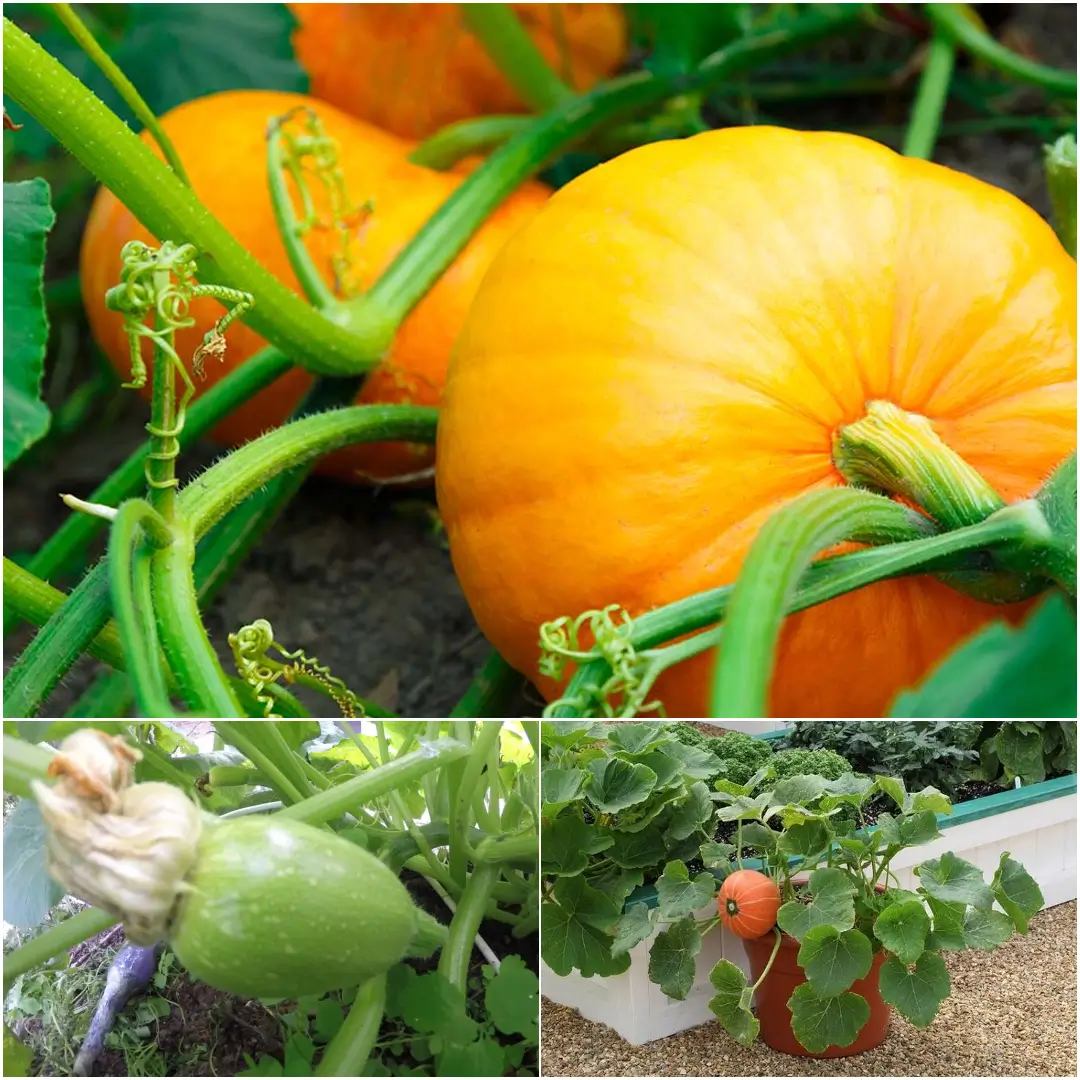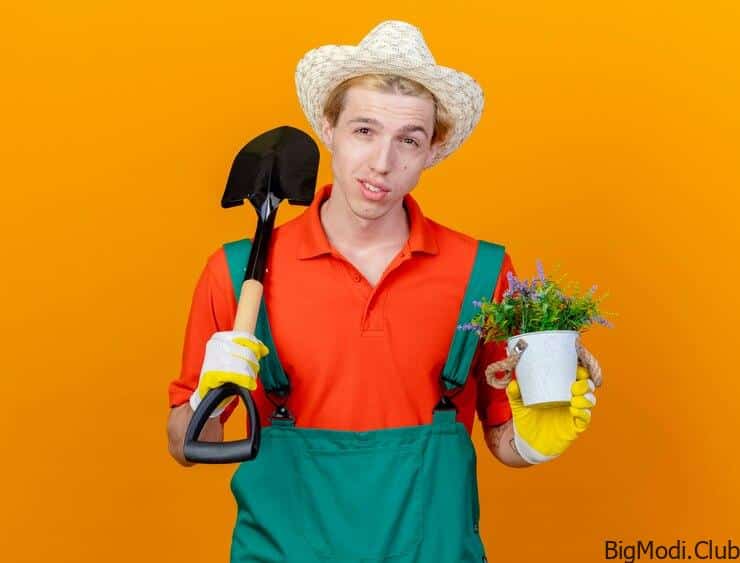Growing pumpkins can be a delightful and rewarding experience. Whether you’re dreaming of a vast pumpkin patch or just a few for Halloween decorations, this guide will cover everything you need to know about planting, growing, and harvesting pumpkins. Let’s delve into the world of pumpkins!
Space Requirements for Pumpkins
Before you dive into planting, it’s essential to understand how much space your pumpkins will need.
Giant Types
Giant pumpkins, like the infamous “Dill’s Atlantic Giant,” require a hefty 1,000 square feet per plant. Yes, you read that right! If you’re aiming for those jaw-dropping, competition-worthy pumpkins, be prepared to allocate ample space.
Regular-Size Varieties
For your standard pumpkin varieties, aim for 50 to 100 square feet per plant. This will give them enough room to sprawl and thrive without competing too much for nutrients.
Miniature Types
If you’re short on space, miniature pumpkins are your best bet. They need just 15 to 36 square feet per plant. Perfect for container gardening or smaller plots, these tiny wonders are both cute and productive!
Understanding the Growing Season
The pumpkin growing season is crucial for ensuring a bountiful harvest.
Frost-Free Days
Pumpkins typically require 75 to 100 frost-free days. If you live in a northern climate, make sure to plant by late May. Southern growers can start planting by early July to give their pumpkins the best chance to thrive.
Planting Pumpkins
Now that you know the space and timing, let’s get into the nitty-gritty of planting.
Soil Preparation
Before you plant, take a moment to mix aged manure and/or compost into your soil. Pumpkins are heavy feeders and need nutrient-rich soil to grow big and strong.
When to Plant
You should plant your seeds after the threat of frost has passed and the soil temperature is a cozy 65° to 95°F (18° to 35°C). If your growing season is short, consider starting seeds indoors in peat pots about 2 to 4 weeks before the last frost.
Planting Method
- Spacing: Vining pumpkins need 50 to 100 square feet per hill. You can sow seeds in rows 8 feet apart or in hills spaced 4 feet apart.
- Seed Depth: Plant seeds about 1 inch deep in hills, and if you’re using rows, space them 6 to 12 inches apart. As seedlings grow, thin them to your desired spacing.
Growing Pumpkins: Tips for Success
Once your seeds are in the ground, it’s time to nurture your pumpkin plants.
Watering
Pumpkins love water! Aim to provide about 1 inch of water per week, especially during the critical fruit-setting phase. Water them in the morning or during those hot afternoon hours to keep the soil moist without inviting rot.
Mulching
Adding a layer of mulch around your pumpkins is a game-changer. It helps retain moisture, suppress weeds, and deter pests. Plus, it adds a nice aesthetic touch to your garden!
Nutrient Requirements
Side-dressing with aged manure or compost will keep your plants nourished. When your plants reach about 1 foot tall, fertilize them with a high-nitrogen formula. As they prepare to bloom, switch to a high-phosphorus formula to promote strong fruit development.
Pollination
Bees are your best friends when it comes to pumpkin pollination. Protect your early plants with row covers but remember to remove them before flowering. To attract more bees, plant colorful flowers nearby or consider placing a bee house in your garden.
Types of Pumpkins to Consider
Pumpkins come in all shapes and sizes. Here are some popular types you might want to grow.
Miniature Varieties
Miniature pumpkins, such as ‘Jack Be Little,’ are a breeze to grow. They’re perfect for decoration and can produce up to a dozen fruits per plant!
Carving Pumpkins
For those spooky Jack-o’-lanterns, go for carving pumpkins like ‘Autumn Gold’ and ‘Magic Lantern.’ These varieties are designed for decoration and will wow your Halloween guests!
Giant Pumpkins
If you’re aiming for a show-stopping giant pumpkin, look no further than ‘Dill’s Atlantic Giant.’ With proper care, these monsters can grow up to 200 pounds! Just remember, they require a lot of space and dedication.
Cooking Pumpkins
For culinary delights, consider varieties like ‘Sugar Treat.’ These pumpkins are perfect for pies and soups, offering a deliciously sweet flavor.
Harvesting Pumpkins: When and How
Timing is everything when it comes to harvesting pumpkins.
Timing
Your best bet is to harvest pumpkins when they are fully mature, which usually occurs on a dry day. Don’t pick them just because they’ve reached a desired size; maturity is key!
Indicators of Ripeness
Look for a deep, solid color—typically orange for most varieties. The rind should feel hard and sound hollow when thumped. Another tip? Press a fingernail into the pumpkin’s skin; if it resists puncture, it’s ripe!
Cutting the Pumpkin
Use a sharp knife to cut the fruit from the vine, making sure to leave 3 to 4 inches of stem. This will help prolong its freshness. And remember, handle your pumpkins gently to avoid bruising!
Curing and Storage of Pumpkins
Curing your pumpkins is a crucial step to enhance their flavor and longevity.
Curing
To toughen the skin, cure your pumpkins in a sunny spot for about 10 days. Aim for a temperature of 80º to 85º F with 80 to 85% humidity. This process not only enhances flavor but also makes for a beautiful display!
Storage
Once cured, store your pumpkins in a cool, dry place at 50º to 55º F for 2 to 3 months. Properly saved seeds can last up to 6 years, making your pumpkin-growing endeavors sustainable!
Common Pests and Diseases
Pumpkins are susceptible to various pests and diseases, so it’s wise to be vigilant.
- Anthracnose: Look for yellow/brown spots on leaves and stems. Control by destroying infected plants and choosing resistant varieties.
- Aphids: These little pests can distort leaves and flowers. Control them with water sprays or insecticidal soap.
- Blossom-End Rot: Caused by calcium deficiency, this disorder appears as dark spots on fruit. Ensure even watering and proper soil pH to prevent this.
- Cucumber Beetles: Handpick or use row covers to keep these pests at bay.
Growing pumpkins is an adventure filled with joy and satisfaction. From preparing the soil to the exciting harvest, each step is crucial in ensuring a successful crop. With proper planning, care, and attention to detail, you can cultivate a thriving pumpkin patch that provides not just fruit, but also a sense of accomplishment. So grab your seeds and get ready for a pumpkin-growing journey!
FAQs
How do pumpkins grow for beginners?
Pumpkins grow from seeds planted in nutrient-rich soil. Begin by preparing your soil with compost or aged manure, then plant seeds after the last frost when the soil is warm. Ensure they receive enough sunlight, water, and nutrients throughout their growing season.
How long do pumpkins take to grow?
Pumpkins typically take about 75 to 100 days to grow from seed to harvest, depending on the variety and climate conditions. Make sure to plant them early enough to avoid frost.
Are pumpkins easy to grow?
Yes! Pumpkins are generally easy to grow, especially with proper planning and care. They thrive in well-drained soil, need plenty of sunlight, and require consistent watering. Beginners can successfully grow them with a little patience and attention.
What is the best month to plant pumpkins?
The best time to plant pumpkins varies by region. In northern areas, aim for late May, while southern growers should start planting in early July. Always ensure that the threat of frost has passed and the soil is warm enough.


